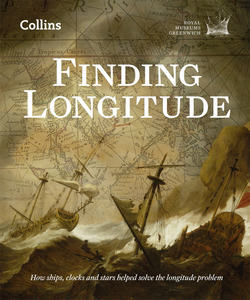Читать книгу Finding Longitude: How ships, clocks and stars helped solve the longitude problem - Rebekah Higgitt - Страница 5
A WORLD DIVIDED
Оглавлениеit is well known by all that are acquainted with the Art of Navigation, That nothing is so much wanted and desired at Sea, as the Discovery of the Longitude, for the Safety and Quickness of Voyages, the Preservation of ships, and the Lives of Men.
‘An Act for providing a Publick Reward for such Person or Persons as shall discover the Longitude at Sea’ (1714)
In 1494, Spain and Portugal partitioned the world. Under the Treaty of Tordesillas, signed that year, a line 370 leagues west of the Cape Verde and Azores islands split the globe from pole to pole. Lands discovered to the west of the line would belong to Spain, those to the east to Portugal. East–west position – longitude – had become territorial. Yet the treaty did not explain which of the islands was to be used to determine the line’s position, or how to translate leagues (roughly three miles) into degrees and so decide whether new discoveries lay to east or west. Portugal also assigned more leagues to a degree of longitude than did Spain, placing more territory under its domain. Moreover, the Treaty had effect only in the Atlantic hemisphere and things became even more difficult when both nations reached the East Indies. Within a few years, matters came to a head there over possession of the Moluccas, the ‘Spice Islands’. The struggle for the control of the lucrative spice trade was intense, and the conflict between Spain and Portugal was only resolved in 1529 by the Treaty of Saragossa, which specified an equivalent dividing line in the East. Global positioning was, even then, a serious political matter.
This book is an account of how the determination of longitude at sea became feasible, and of how global positions could be agreed and the world known with greater clarity. On the one hand, it is a tale of seafaring, time and astronomy; on the other, it concerns commerce, competition and conflict, exploration and empire. The ‘longitude problem’, as it has become known, was a technical challenge that taxed the minds of many of the great thinkers of the Renaissance and Enlightenment. Galileo Galilei, Christiaan Huygens and Isaac Newton all grappled with it as a puzzle that seemed insoluble. Finding the longitude became a ridiculous quest only to be undertaken by the deluded, until the simultaneous development in the late eighteenth century of two practicable, complementary means of fixing a ship’s position changed everything. These methods gradually came into use, both for routine navigation and for creating better charts of the world’s oceans and coastlines, mapping the Earth in ways that had been inconceivable in 1494.
The quest for longitude is an international story, and this account touches on important work in the Netherlands, France and other countries from the late fifteenth century onwards. However, the main focus is on events in Britain from the early eighteenth century to the middle of the nineteenth. It was in Britain that the rewards offered under the Longitude Act of 1714, and the creation of an administrative structure to support promising ideas, led to the testing and development of the two methods that would eventually come into standard use at sea.
Why it should have been in Britain that the problem was solved is one of the issues this book addresses. The answer has much to do with the relationships operating between government, commerce and science at the time. Longitude solutions were encouraged by the British state through the 1714 Act, as had happened elsewhere; but, crucially, the new incentives addressed a British audience of skilled, commercially driven artisans working in a context of public discussion of new ideas. The Act therefore played to the strengths of Britain’s metropolitan culture of craft skill and open intellectual debate.
Longitude mattered greatly at sea, but much of the story of how it was found and then deployed took place in cities on land, among academics and artisans. Crucially, the Commissioners of Longitude named in the 1714 Act eventually took on the role of encouraging promising work over many years, and of fostering the means by which the new techniques could be used on all ships, not just Britain’s alone. It was not simply a matter of paying a reward; good ideas needed to be turned into reliable tools. Once they had been, Britain’s existing maritime dominance allowed its navy to lead efforts to deploy the new methods for finding longitude in order to chart the world with certainty. As a result, a new line, now passing through the Royal Observatory at Greenwich, would come to divide the globe and define every ship’s longitude.
A map of the world, by Paolo Forlani, published by Fernando Bertelli, 1565
{National Maritime Museum, Greenwich, London}
